Gaelic speakers building a bridge between Mourne and Mann
- Published
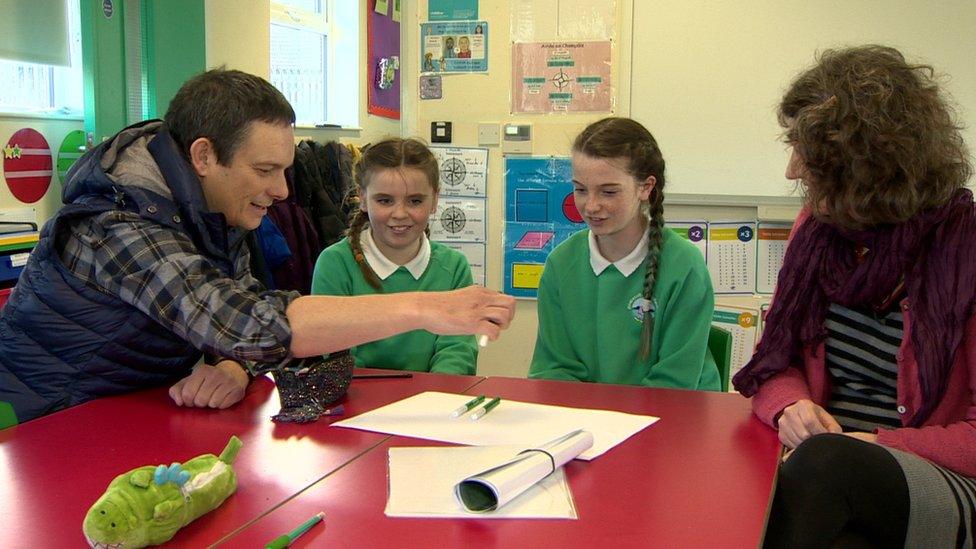
Adrian Cain and Aalin Clague from the Isle of Man introduce their language to children in Mourne
In a primary school on the outskirts of Kilkeel two fluent Gaelic speakers, one Irish, one Manx, can't agree.
The visitor eventually concedes that in County Down it is definitely cúig ("coo-ig") not queig ("queg").
What they can agree on, though, is how easily they understand each another.
The chat at Gaelscoil na mBeann is the start of a relationship between the Irish medium school and the Bunscoill Ghaelgagh, or Manx medium primary school, barely 40 miles across the Irish Sea.
The blow-in is Adrian Cain, he works with heritage organisation Culture Vannin, overseeing the development of the Isle of Man's native language.
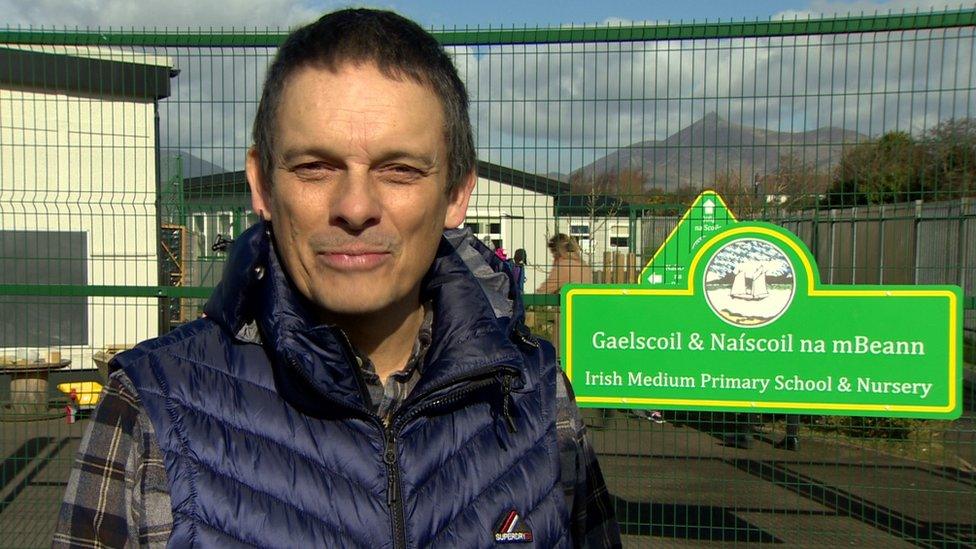
Adrian Cain is a passionate advocate for the Manx language
The resurgence of Manx has been, in some ways, remarkable. From a handful of speakers in the 1970s, next year marks two decades since the world's first and only Manx medium school opened.
Together with pre-school provisions, as well as options in higher education, Adrian says there are now about one thousand young people learning Manx to some degree.

What is Manx?
Like Irish, Manx is a Gaelic language - with a little goodwill and advice its speakers can make themselves understood to the other, though perhaps not as easily as in the past.
Although some children are being brought up with Manx, its last traditional native speaker, Ned Maddrell died in 1974 - but not before he had passed on the language to a new generation of dedicated activists.
Today, about 2,000 people in the Isle of Man can speak some Manx, out of a population of 85,000.
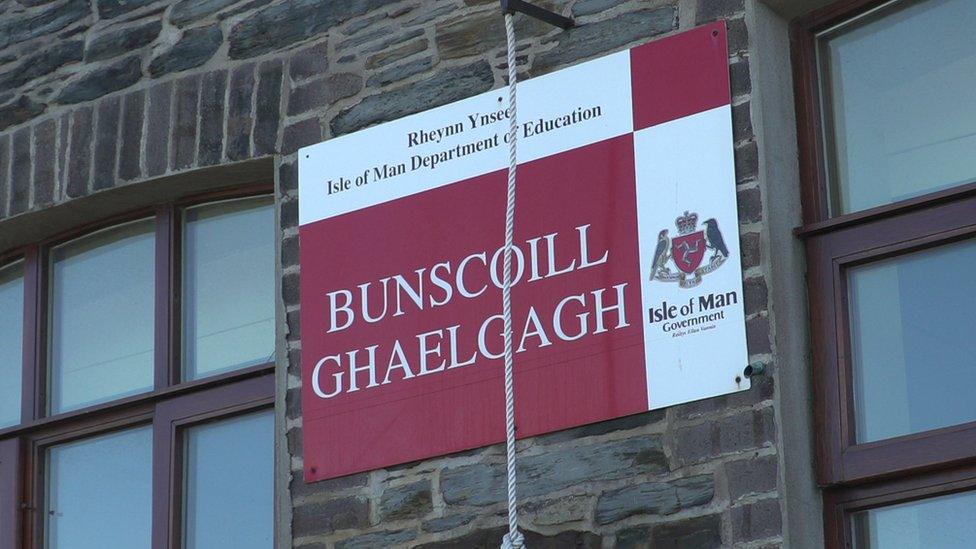
The Isle of Man's only Gaelic medium school was established in 2001
The Bunscoill Ghaelgagh has 70 pupils.
Manx survived a controversial UNESCO decision to declare the language extinct in 2009, a move later rescinded.
The former Irish president Éamon de Valera played a vital role in preservation of Manx. Having visited the island and spoken to Ned Maddrell, he sent a delegation from the Irish Folklore Commission to the island to record the language's last native speakers, creating an invaluable archive of their speech.

But now, Adrian says, it's time to branch out.
"It's important for our children to see, to recognise, to understand that there are children elsewhere who speak a language similar to them.
"They're not just isolated in the Isle of Man."
He says exchange programmes and more formal links, not just with Gaelscoil na mBeann, but with other Irish medium schools in Northern Ireland, is the next step.
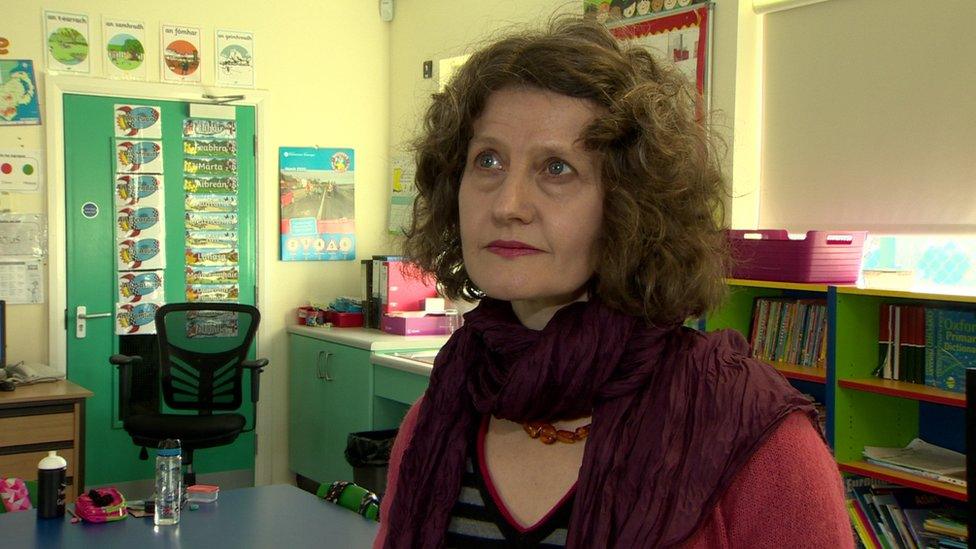
Aalin Clague teaches at the Bunscoill Ghaelgagh, for her the visit was an opportunity to learn
"The languages are similar, the challenges are similar… so more bridges, more contact and more support and help," he added.
Kilkeel primary 7 pupil Chloe McAlinden had no knowledge of her neighbouring language prior to the visit.
She's not alone, most people have little knowledge of the Isle of Man, let alone its language. The island's population would only just fill Dublin's Croke Park stadium.
But Chloe is struck by the similarities the languages and says she's excited to now meet Manx speakers her own age and learn about their culture.
"It's very similar to what we learn in school, but a wee bit different... a wee bit funny," she admitted.
'Shared heritage'
Aalin Clague is a Manx language teacher in Bunscoill Ghaelgagh, as well as being a musician and singer. For her the visit was not just about the positives and sharing ideas but also about learning how others overcome difficulties.
Receiving interested visitors makes children feel valued, she said, adding her own pupils were just as excited about finding out about their neighbours.
Mícheál Brady, the principal of Gaelscoil na mBeann, said the Kilkeel area and the Isle of Man have long-standing links and that it is important to show his pupils and people in the area that aspect of their shared heritage and language.
The school visit was part of a number of events in the Mourne area organised by Conradh na Gaeilge Boirche Íochtar, the Lower Mourne Irish language group based in Annalong, as part of their 'Building bridges with the Isle of Man' program.
- Published31 January 2013

- Published3 July 2019
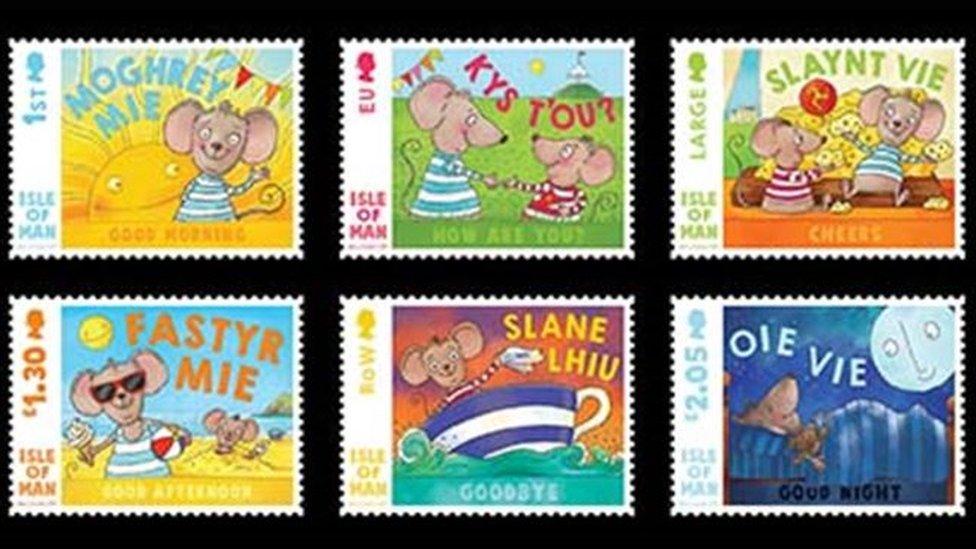
- Published26 October 2017
